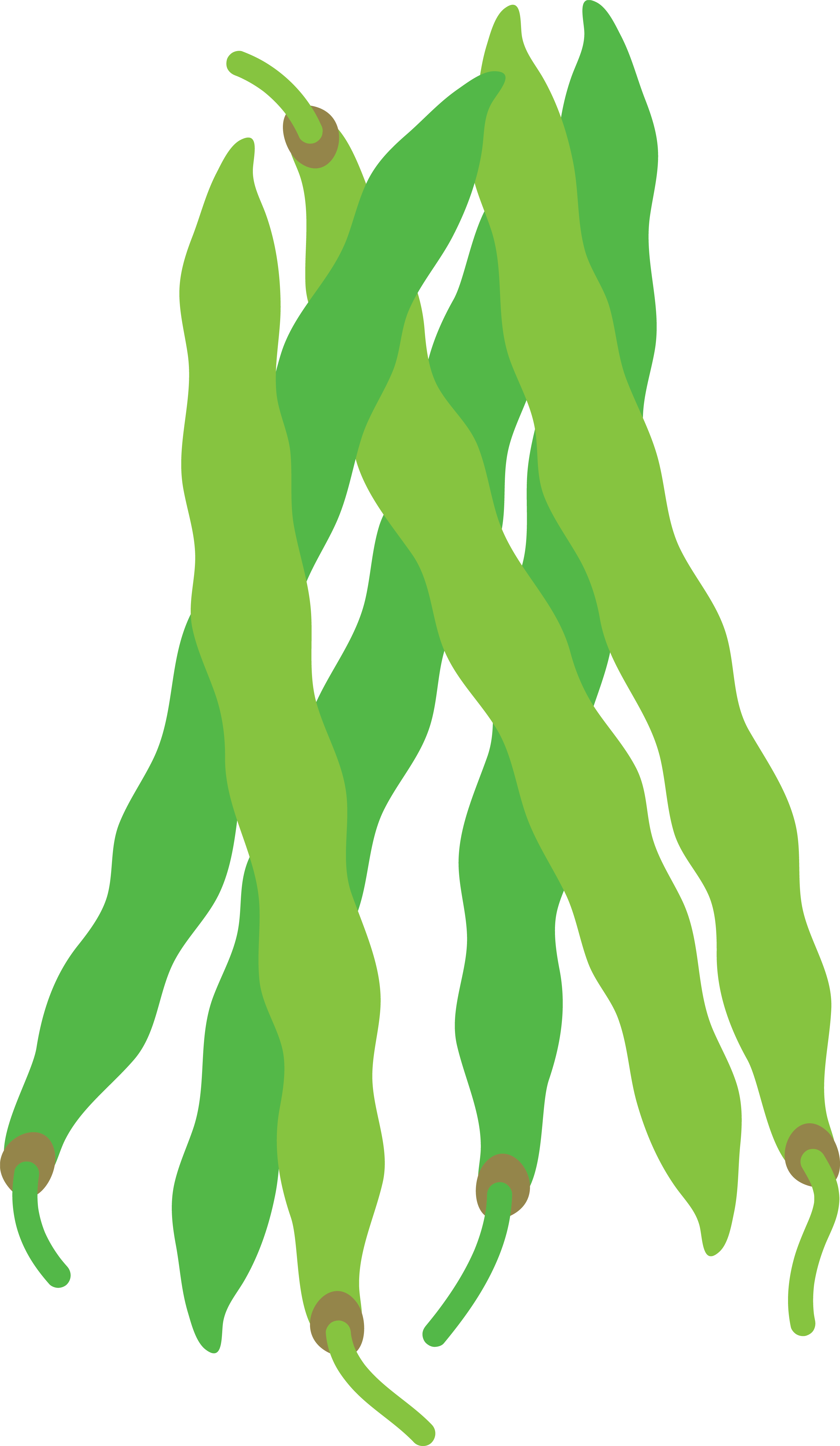Asparagus

Since Roman times people have been going a little crazy for asparagus. The Romans hid them in the mountains, the Europeans like to grow white ones underground, and the good people of the Vale of Evesham in Worcestershire celebrate each year’s new crop with a massive festival and the Asparalympics. All bonkers! Maybe it’s because asparagus gives you funny smelling wee.

Nutrition
Asparagus contains vitamin A, C and K which supports our eyes, skin, immune and bone health and folic acid which is important for making blood cells.

Shopping Guide
Avoid stalks that look to be soft or wilted. Asparagus season is from the end of April to the end of June so look to buy the produce at the time for better value.

Storage
To store asparagus, stand the stems in a jar or glass of water and keep in the fridge for up to a week.

Serving Suggestions
Best steamed, boiled or baked, allow them to cool a little and serve with a knob of butter and pepper. Or sprinkle with parmesan and roast for 12 mins at 200C/180C fan/Gas 6.

Seasonality
Buying veg in season is not only great for the planet, it can be good for your wallet, too! Seasonal veg are often cheaper and frequently taste better, so can be a better time to try with a child as the often sweeter, riper taste is more enjoyable.
Coming In:
March
At Its Best:
April - June

Engage
Here are some of our favourite ways to engage kids with asparagus.
Arts & Crafts
Start simple with some non-food based engagement. This is especially helpful for a fussier child or those with sensitivities around food.
For asparagus, why not try drawing the top with colouring pencils or pens and a magnifying glass so you can see it up close? Or use multiple asparagus spears to create an edible meadow or forest scene with some other veggies.

Puzzles & Games
Puzzles and games are all about fun and centering them on veg brings a positive association with it. Like arts & crafts, this is great for those who aren’t yet ready to interact physically with the veg, but it can still be fun for all!
For asparagus, why not try counting with them? Can you tally number by lining up four asparagus spears and then crossing with the fifth and starting again?

Science
Science allows for curiosity, play and hands-on experiments. It helps kids to become fascinated with veg – how it looks, reacts, smells, cooks and more. Finding fun and simple experiments to allow kids to play with their veg makes them curious about it and helps them approach it in a positive way.
Did you know that asparagus makes some people’s wee smell? Kids love testing this theory – if you try eating some, what happens? Stefan Gates has some other amusing ideas for veg science for kids who love a bit of toilet humour!

Sensory
Sensory exploration can be a wonderful introduction to physically interacting with veg. Turn it into a positive, pressure-free experience by starting off with the golden rules of “You don’t need to try and you don’t need to like.” Reassuring a child that, while they have a chance to taste a veg, they don’t have to, and are not expected to like it if they do, can make them more happy to engage with it.
Asparagus is perfect for exploring through sight and smell. Get a few spears and see if you can describe the different parts and what it looks like or reminds you of. Are they mini-spears or giant blades of grass? Do the tops remind you of a bunch of flowers or perhaps a door knob? Try smelling the asparagus. What do they smell like? Snap one open – does the smell get stronger. Try cooking one – what does it smell like now? If your children feel up to it, show them how you can crunch through a raw asparagus and chomp on a softer cooked one, and describe the difference in taste and see if they want to join in (you could bring a dip in here if it helps).

Kids in the Kitchen
Children who help to prep and cook veg are more likely to eat it. If you feel your child is ready to help and could benefit from it, keep the stress and mess to a minimum by choosing one simple task for them to do as part of the prep, meaning they can be involved and feel like the recipe is in part ‘theirs’, but also not make the process too much longer or more complicated.
For a younger child, why not put them in charge of prep. Kids love this – once they have washed their hands and the spears, show them how to find the bit near the bottom of the asparagus where it naturally bends and let them snap off the woody ends!
For an older child, it could be a great opportunity to show them how to safely cook over heat. Let them prep the asparagus spears and toss in a little oil and salt, then show them how to get a pan nice and hot and safely fry or griddle the asparagus in it until just starting to char and go a beautiful bright green colour.
Use our Kitchen Ninja chart and videos to find simple ways for kids to help in the kitchen.


Your Food
Find your go-to meals in our family favourites section and see what veggies work best with them.
Find out how to add more veg to your suppers here.
Recipes

If You Like Asparagus…Try
Does your child enjoy asparagus? That’s great! Asparagus is usually savoury and crunchy (raw) or soft (cooked), so why not try a similar texture and/or taste…

Serving
The moments before food is offered can be a perfect opportunity for engagement that can help make it more likely a child will eat it!
The first thing to do is remove the pressure. If the veg doesn’t get eaten, it’s not the end of the world. There will be other days, other dinners, other chances. Fun is key here – try not to worry about mess, perfect table manners, or playing with food. Instead, focus on making the process of getting the food to the plates, readying the table, and the actual eating relaxed.
The best principles for success here are the Three Rs (role modelling, rewarding, re-offering) which you can read about here.
But there is one more way you can serve for success, and that is giving your child a role. You don’t have to do this every time, just encourage them in their strengths through it when you can.
Here are some of our favourite ideas:
Design a menu
Come up with a silly name or story for a dish
Help with making a meal plan and choosing veg for dinners or snacks
Help to serve up the meal on dishes, lay the table or create a centrepiece to be involved in the physical ‘serving up’ process
The Wonderful World of Veg
Check out our vegepedia. When to buy in-season. How to store them to keep for longer. How to engage children with each veg, and simple ideas of how to prepare and cook them for maximum taste and minimum waste. Select a veg…









